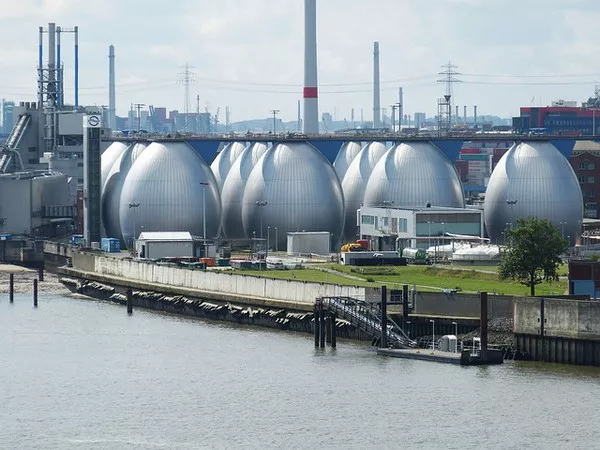Wastewater, often termed sewage water, is a byproduct of human activities, carrying various contaminants and pollutants. Without proper treatment, wastewater poses significant risks to both the environment and human health. In this article, we will delve into the sources and hazards of wastewater, explore different treatment methods, highlight household, industrial, and municipal wastewater treatment, discuss environmental protection and sustainability, and touch upon new technologies and innovations in wastewater treatment.
Sources and Hazards of Wastewater
Wastewater originates from a multitude of sources, including domestic, industrial, and urban discharges. Domestic sources encompass household activities such as bathing, cooking, and toilet flushing. Industrial discharges stem from manufacturing processes, agricultural activities, and mining operations. Urban runoff, comprising rainwater and stormwater, also contributes to wastewater contamination by carrying pollutants from streets, yards, and construction sites.
The impact of harmful substances in sewage on the environment and human health cannot be overstated. Wastewater contains a plethora of pollutants, including pathogens, heavy metals, organic compounds, and nutrients like nitrogen and phosphorus. These contaminants can contaminate water bodies, harm aquatic life, degrade ecosystems, and pose health risks to humans through waterborne diseases and exposure to toxic substances.
Wastewater Treatment Methods
Wastewater treatment involves the removal of physical, chemical, and biological contaminants to render water safe for discharge or reuse. Physical treatment methods, such as screening, sedimentation, and filtration, remove suspended solids and debris from wastewater. Chemical treatment employs coagulants, flocculants, and disinfectants to precipitate solids, neutralize pH, and disinfect pathogens. Biological treatment utilizes microorganisms to metabolize organic pollutants, converting them into harmless byproducts like carbon dioxide and water.
Each treatment method operates on specific principles and is applicable in various scenarios. Physical treatment is effective for removing large particles and sediments, while chemical treatment is adept at neutralizing toxins and disinfecting water. Biological treatment excels in degrading organic matter and nutrients, promoting natural remediation processes.
Household Wastewater Treatment
Household wastewater treatment is essential for preventing pollution and safeguarding public health. Simple methods like chemical disinfection, sedimentation tanks, and biological filters can be employed to treat wastewater at home. Chemical disinfection with chlorine or iodine effectively kills pathogens, while sedimentation tanks allow solids to settle, clarifying the water. Biological filters utilize beneficial bacteria to break down organic matter, enhancing water quality.
Proper operation and maintenance of household wastewater treatment systems are paramount to their effectiveness. Regular cleaning, monitoring, and servicing ensure optimal performance and prevent system failures. Additionally, promoting water-saving practices like fixing leaks and using water-efficient appliances reduces the volume of wastewater generated, lessening the burden on treatment systems.
Industrial and Municipal Wastewater Treatment
Large-scale wastewater treatment plants play a pivotal role in treating industrial and municipal wastewater. These facilities employ multi-stage treatment processes, including primary, secondary, and tertiary treatment, to remove contaminants effectively. Primary treatment involves physical processes like screening and sedimentation to remove solids and grit from wastewater. Secondary treatment employs biological processes like activated sludge or trickling filters to degrade organic matter and nutrients. Tertiary treatment utilizes advanced techniques such as filtration and disinfection to further polish the water quality before discharge or reuse.
Sludge treatment and recycling are integral components of industrial and municipal wastewater treatment. Sludge, a byproduct of treatment processes, contains organic matter and nutrients that can be beneficially reused. Methods such as anaerobic digestion, composting, and incineration are employed to stabilize and dispose of sludge, minimizing environmental impact and maximizing resource recovery.
Environmental Protection and Sustainability
The importance of clean wastewater to the environment cannot be overstated. Proper wastewater treatment protects water bodies, preserves ecosystems, and safeguards public health. By reducing wastewater discharge and recycling resources, we can minimize pollution and promote sustainability. Implementing water conservation measures, improving infrastructure, and adopting eco-friendly practices contribute to a cleaner, healthier environment for future generations.
New Technologies and Innovations
Emerging technologies offer promising solutions to enhance wastewater treatment efficiency and sustainability. Membrane filtration, including reverse osmosis and ultrafiltration, provides superior pollutant removal and water purification. Electrochemical treatment utilizes electrocoagulation and electrooxidation to degrade contaminants and disinfect wastewater effectively. Plant purification, or phytoremediation, harnesses the natural filtration capabilities of plants to remove pollutants from water and soil.
Continued research and innovation in wastewater treatment are essential to address evolving environmental challenges and resource constraints. Investing in new technologies, fostering collaboration between academia, industry, and government, and promoting knowledge-sharing and technology transfer are key to advancing wastewater treatment practices worldwide.
Conclusion
Cleaning sewage water is vital for protecting our environment and health. By understanding the sources and hazards of wastewater, implementing appropriate treatment methods, and embracing environmental protection and sustainability, we can mitigate pollution and promote resource conservation. Embracing new technologies and innovations will further enhance our ability to clean wastewater effectively and sustainably, ensuring a brighter, healthier future for all.
inline_related_posts title=”You Might Be Interested In” title_align=”left” style=”list” number=”6″ align=”none” ids=”8525,8462,8461″ by=”categories” orderby=”rand” order=”DESC” hide_thumb=”no” thumb_right=”no” views=”no” date=”yes” grid_columns=”2″ post_type=”” tax=””]

